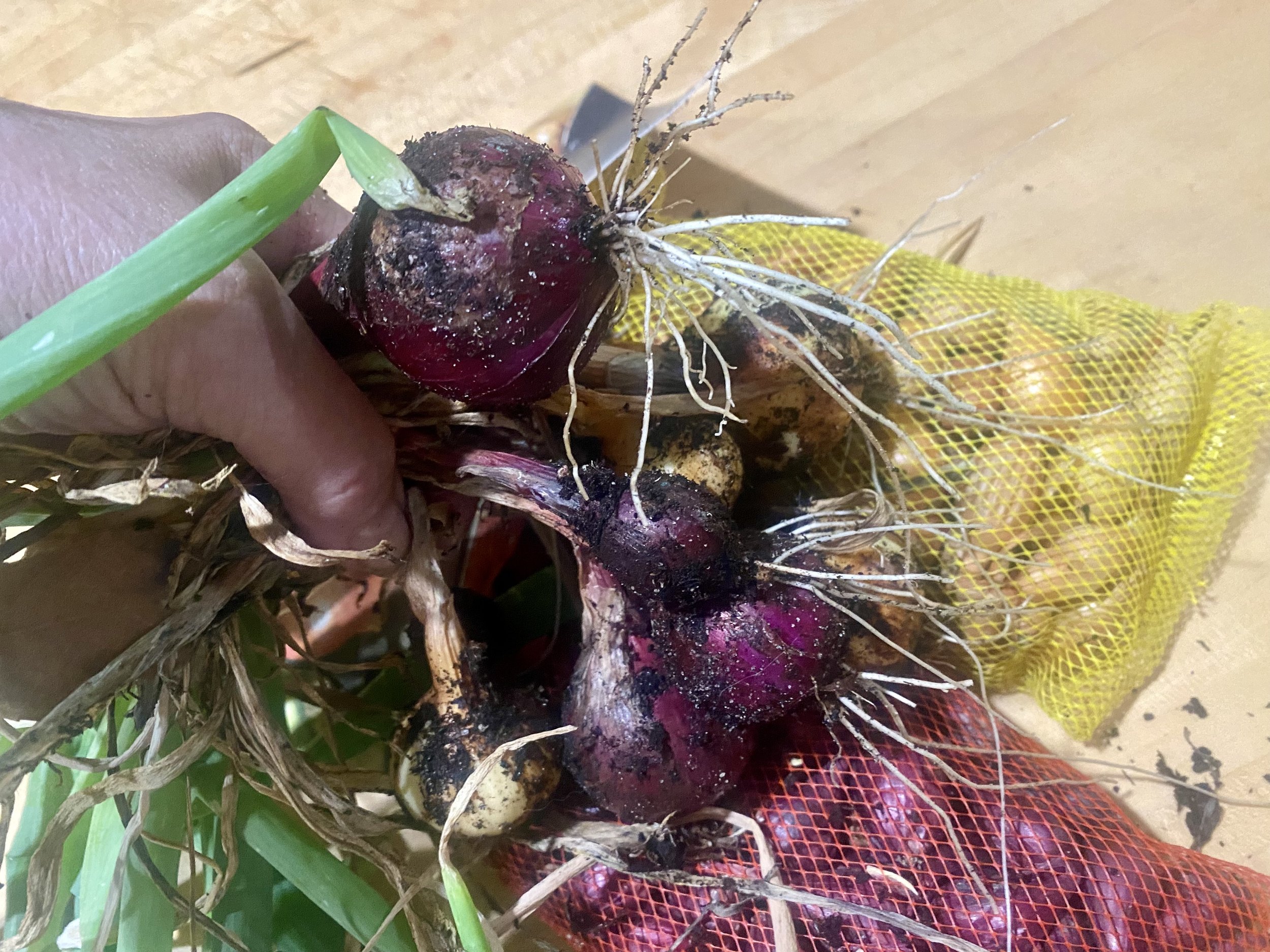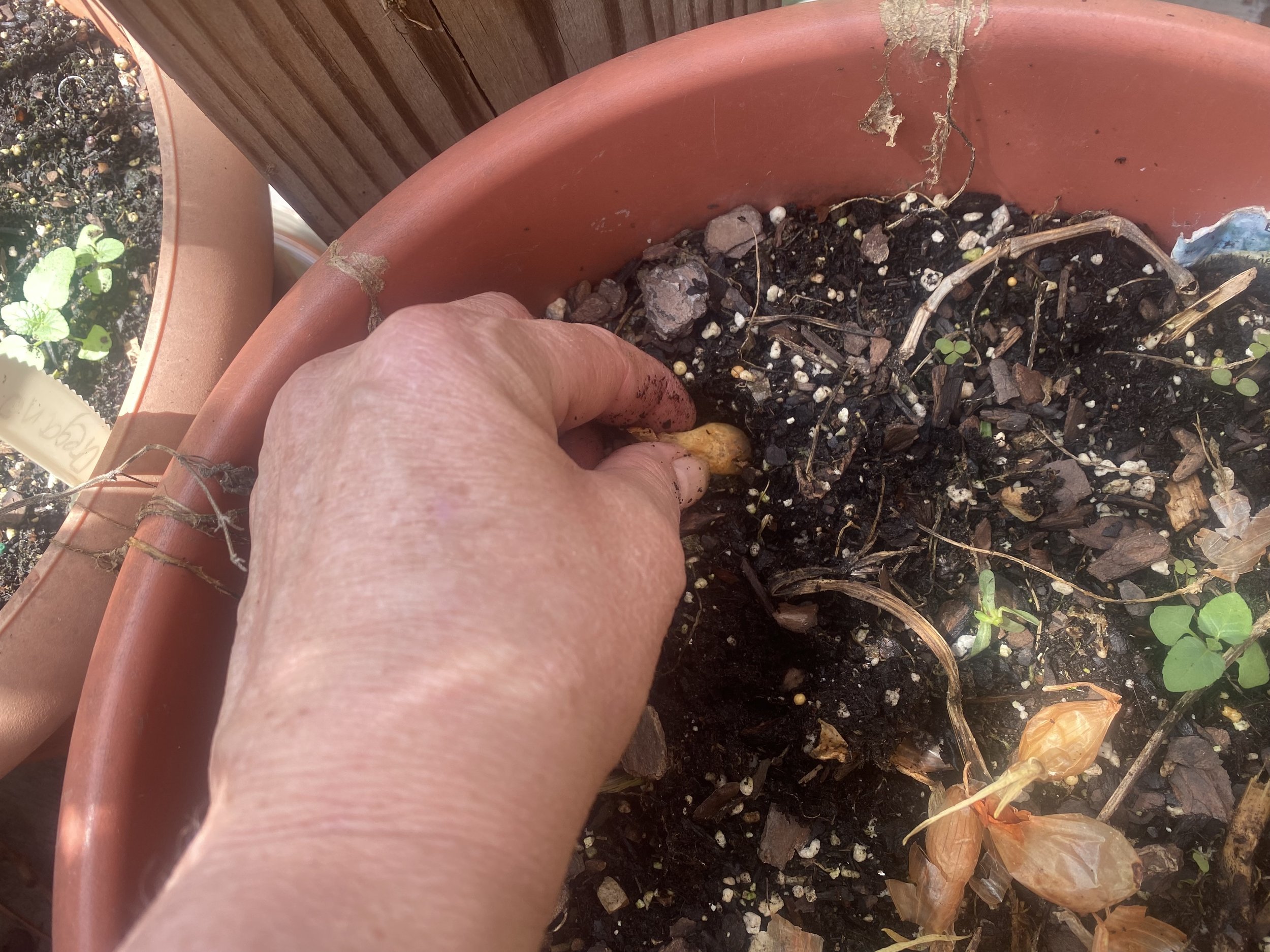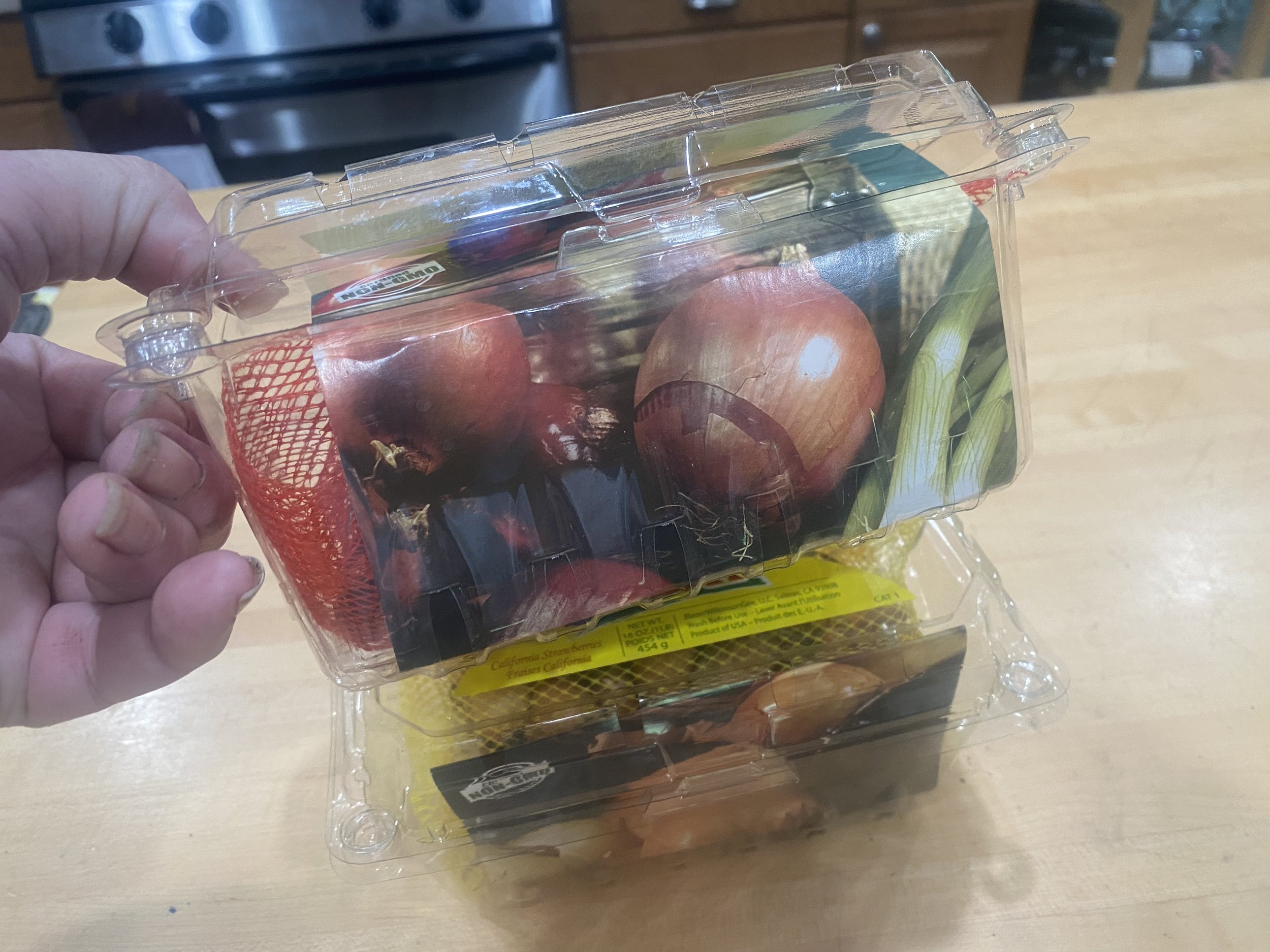Planting Onions
/my first batch of homegrown onions, ready for the crisper. (charlotte ekker wiggins photo)
Planting Onions
I start the growing season in my USDA Hardiness Zone 6A by planting onions. It helps that I use a lot of onions in my home cooking from soups to salads.
Onions are also excellent companions to roses, keeping bugs off those edible flowers.
I look for bags of onion sets late January and early February. You can find them in home and garden centers and even grocery stores. Some farm centers offer onion sets by weight.
I focus on growing my favorites, red onions, and then yellow onions. Two pots of each so that I can enjoy the onion greens fresh; then dig up bulbs later in the season.
How to Plant Onion Sets
Onion sets are easy to plant. I wait for a good rain, then make holes in a circle around the pot. I don’t plant onions in the same pot two years in a row so I rotate my pot garden as well.
onion sets are easy to plant. make a hole and place one set up to the top. (charlotte ekker wiggins photo)
Once I have the holes made, I plop in an onion set in each, then make sure they are covered with soil.
It takes a couple of weeks for the first onion greens to show up; and maybe three months for the greenery to die back, which is a sign its time to dig up the onion bulbs.
recycled clam shells work to store onions and onion sets. (charlotte ekker wiggins photo)
How to Store Onions
You can recycle the bags that held the original onion sets. If you’re like me, though, you will plant a few onion sets every couple of weeks so you’ll need those mesh bags for the onion sets.
I keep mine in recycled clear clam shells with the cardboard tag. When I run out of onion sets to plant, I then use the mesh bag for storing the onion bulbs in the crisper.
In the meantime, the recycled clam shells also work well for holding the finished onion bulbs in your refrigerator.
Onions are easy to grow and can add flavor to most dishes so give them a try!




































